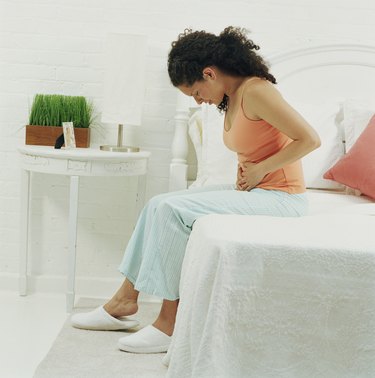
Ulcerative colitis, an inflammatory bowel disease, causes inflammation, irritation and sores in the lining of the rectum and colon. During periods of symptom flare-ups, which often involve rectal bleeding, abdominal pain, fatigue and loss of fluids or nutrients, eating a normal diet becomes difficult. The risk of malnourishment increases with this disease because it impacts the digestive system, but you can manage the disruptive symptoms with dietary changes and by following physician recommendations.
Dietary Basics
Video of the Day

Diet does not cause nor does it cure ulcerative colitis, and no specific diet exists for the condition. However, eliminating food irritants can help reduce symptom flare-ups. Keep a log of foods that cause digestive upset and avoid those foods when symptom flare-ups occur. Maintain a well-balanced diet with food alternatives that do not irritate your colon. Drink plenty of fluids throughout the day to prevent dehydration and eat small meals every four hours to stay nourished. During symptom flare-ups you may need to decrease your fiber intake from raw produce and whole grains, but when you do not have symptoms you can slowly return fibrous foods to your diet.
Video of the Day
Breakfast to Control Diarrhea and Cramping
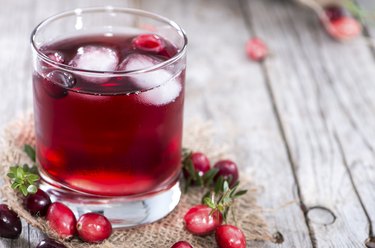
A low-fiber and low-residue diet eases bouts of diarrhea and abdominal cramping associated with ulcerative colitis. Follow this type of diet for the short term and after physician consultation, because it restricts your nutrition intake. Breakfast may include 1/2 cup of apple juice, one scrambled egg with one slice of toasted white bread and a side of plain grits. Plain hot or cold cereal can replace grits, and you may add one slice of cheese to the eggs if you can tolerate dairy. Choose cranberry juice or strained and pulp-free orange juice as an alternative to apple juice. Top the toast with margarine or low-sugar jelly.
Low-Fat and Low-Fiber Lunch
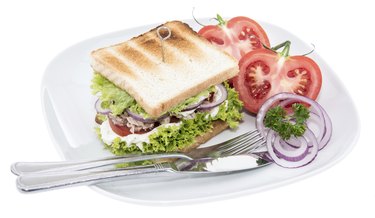
Limit foods high in saturated fats because these increase the amount of waste passing through your colon. Choose well-cooked or tender cuts of meat and nonfat or low-fat dairy as tolerated. Lunch may include a tuna sandwich with an iceberg lettuce slice on white bread, 1/2 cup of cooked carrots on the side and a medium banana. Add a cup of low-fat milk or fruit juice to complete the meal. Instead of bread, wrap the tuna in a white grain pita or tortilla and opt for steamed salmon or flounder as a fish alternative. Use herbs, pepper or plain gravy instead of salt to flavor foods.
Low-Residue Dinner Ideas
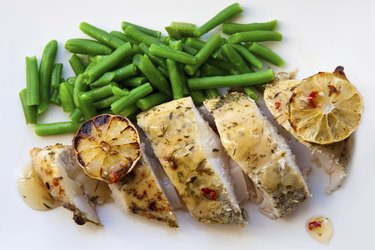
A 3-ounce serving of skinless baked chicken pairs well with cooked green beans and a white grain dinner roll. Add low-fat cream of mushroom soup as a gravy to flavor your meal. If you prefer beef, opt for well-cooked tender roast beef with roasted skinless new potatoes and 1/2 cup of white rice on the side. Include 1/2 cup of canned pears, applesauce or canned peaches as a dessert.
Additional Dietary Considerations
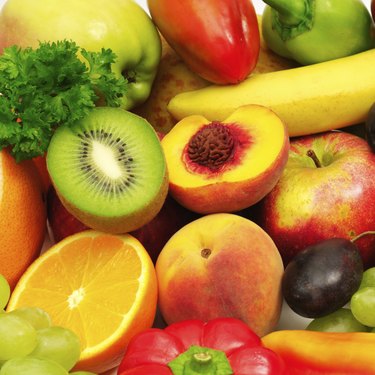
During symptom remission, slowly introduce raw fruits, vegetables and whole grains back into your diet one at a time. If any of the foods result in abdominal pain, digestive upset or bowel complications, stop eating that food. You may have to discover what works best for your symptoms on a trial-and-error basis. Consult your physician for recommendations and dietitian referral as needed. Add snacks to your diet, such as fruit smoothies made with yogurt, graham crackers, plain sherbet or applesauce plus a hydrating beverage, in between meals.
- American Dietetic Association: Crohn's Disease and Ulcerative Colitis Nutrition Therapy
- Crohn's and Colitis Foundation of America; Diet and Nutrition; May 2011
- Jackson Siegelbaum Gastroenterology; Ulcerative Colitis; Frank W. Jackson, M.D.
- University of Pittsburgh Medical Center; Low-Fiber/Low-Residue Diet; March 2011
- National Digestive Diseases Information Clearinghouse: Ulcerative Colitis
Is this an emergency? If you are experiencing serious medical symptoms, please see the National Library of Medicine’s list of signs you need emergency medical attention or call 911.